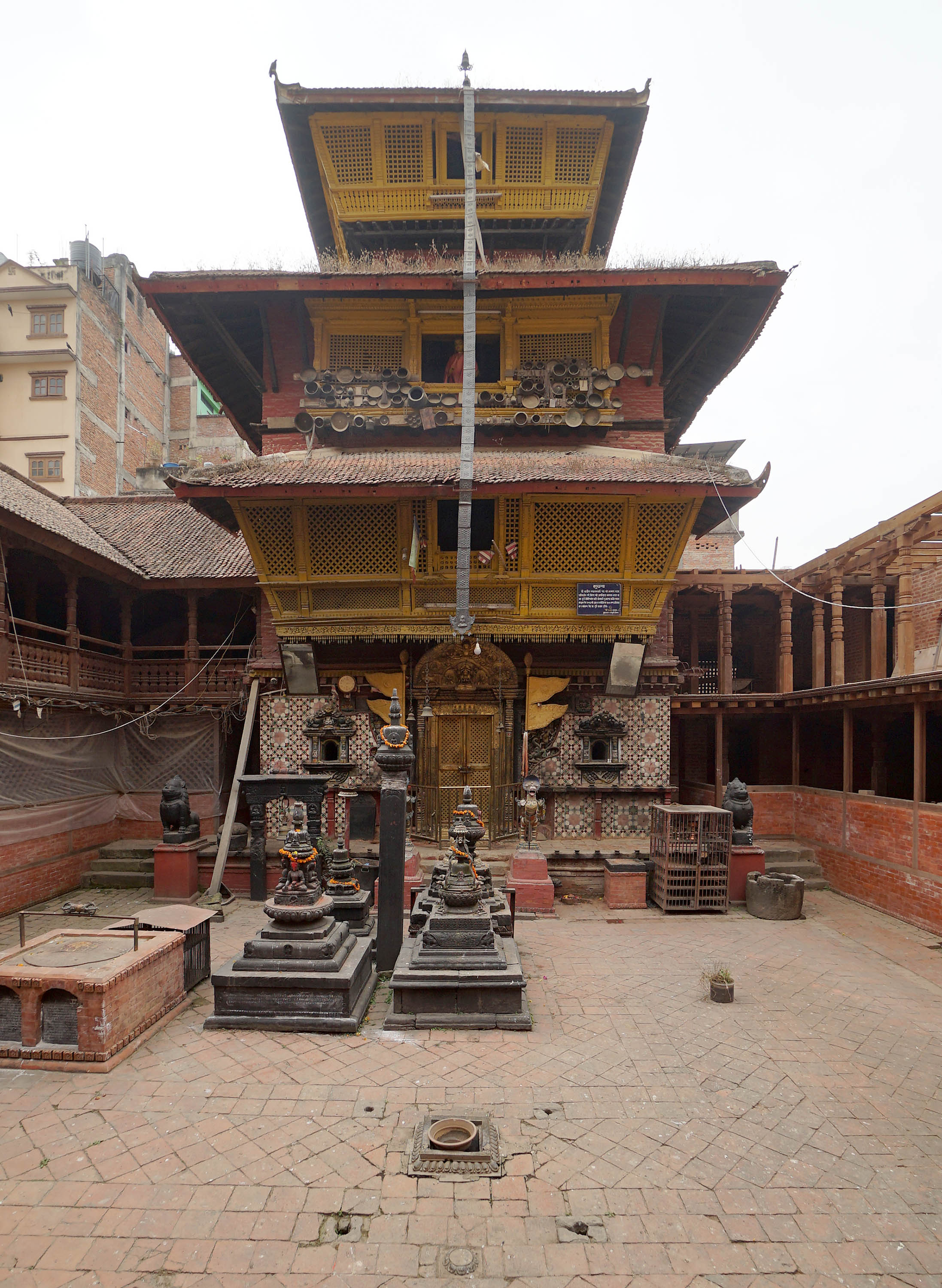Thã Bahī, Kathmandu
Curated by NHDP

Thã Bahī is one of the oldest Buddhist monasteries in the Kathmandu Valley. A gold-plated statue of Maitreya exhibiting the bhaviṣyavyākaraṇamudrā is enshrined as the gandhurī-devatā (main deity) of the Bahī. The locals worship him as Siṃhasārthabāhu. There is another sanctum in the southern side of the Bahī's courtyard. A north-facing image of Amitābha is enshrined here as the kvāḥpāḥdyaḥ (principal deity). This is possibly the only monastery that has two separate sanctums. The Bahī courtyard also contains four caityas, two pillars, a mandaḥ, and jalahari, along with some statues.
Unlike most of the monasteries of the Valley, this Bahī belongs to the Pradhāna clans, but not to any Vajrācārya or Śākya clans. A legend popular among the Newars about the formation of this Bahī narrates that it was initially established in Sāmākhusi. Later, a flood destroyed the monastery, and a trader named Siṃhasārthabāhu returned from his trading voyage to Tibet and dismantled his own house to reconstruct the Bahī where it stands now. Therefore, the Pradhānas of the Thã Bahī revere Siṃhasārthabāhu as their ancestor and worship him as a deity. However, the Tibetan sources credit Atiśā Dīpaṅkara Śrījñāna for the construction of this Bahī. While he travelled from India to Tibet, the king of the Nepāla Valley had welcomed and received him at his palace in 1041 CE. The king built a monastery as per the instructions of Atiśā, which then came to be known as Thama Vihāra (Thã Bahī). However, the Tibetan sources mention that there already were remnants of a foundation of a bahī that was hundreds of years old when Atiśā came here. Therefore, it appears Atiśā only reconstructed this monastery. Dharmasvāmī, a Tibetan monk who lived in Nepal for eight years from 1226 CE-1234 CE, had also visited the Thã Bahī. King Mukundasena of Pālpā had attacked the Bahī during his invasion of the Kathmandu Valley in 1526 CE.
Thã Bahī used to have plenty of property that yielded sufficient income for maintaining the monastery and carrying out religious, rituals and cultural activities. Unfortunately, the Bahī’s income decreased drastically, as most of the property was privatized. A large stretch of land at Sāmākhusi and Manamayju were transferred to individuals, and only very few plots of land now remain in under the Bahī’s possession. The lotus pond in front of the Bahī complex was destroyed and encroached upon by a business complex. Therefore, a court case is pending at the Supreme Court.
The current dispute about the encroachment of the Tha Bahī complex is one of the exemplary cases of the challenges of old and fascinating cultural heritage preservation.
For more information about Thã Bahī, please visit DANAM.
